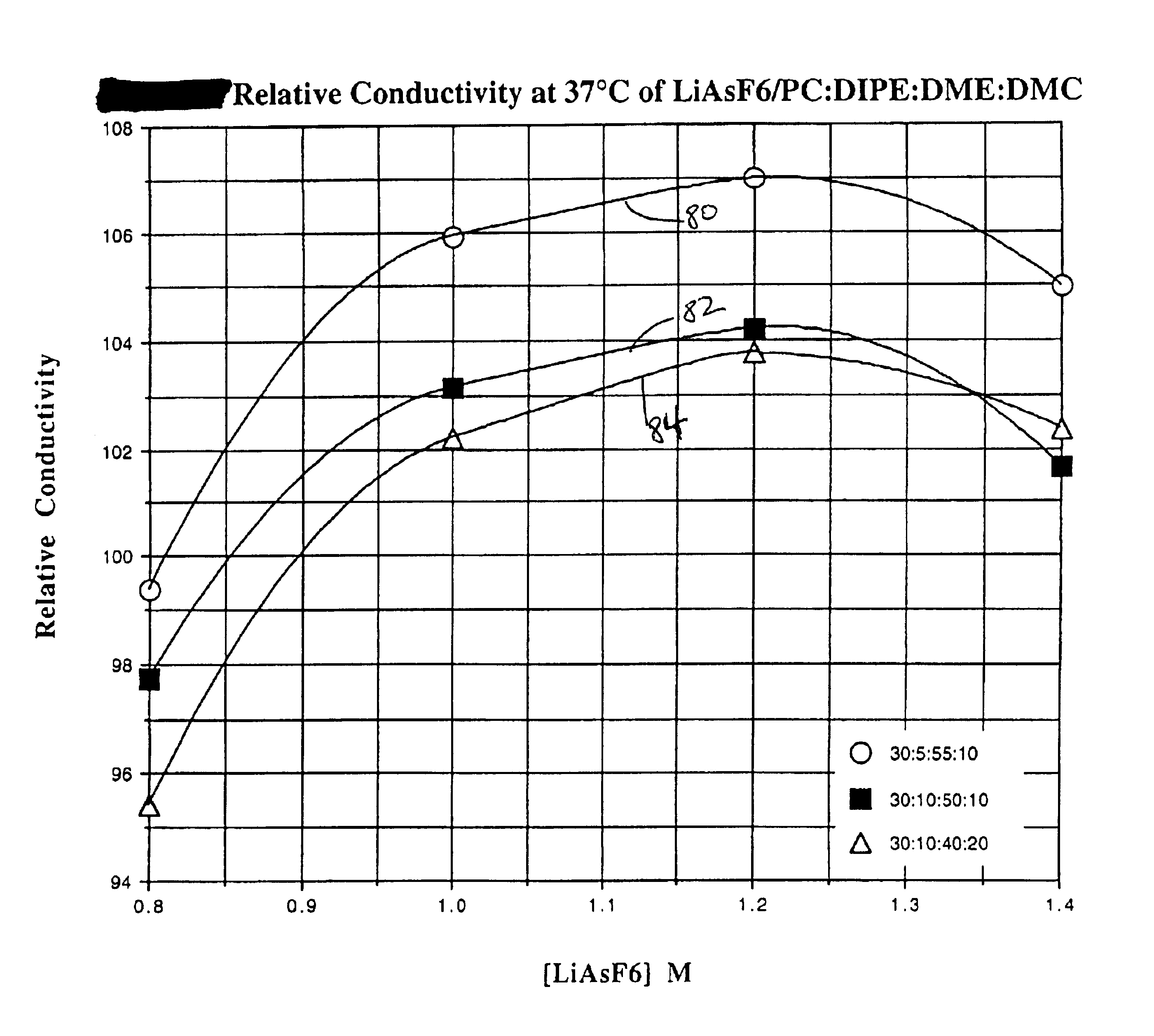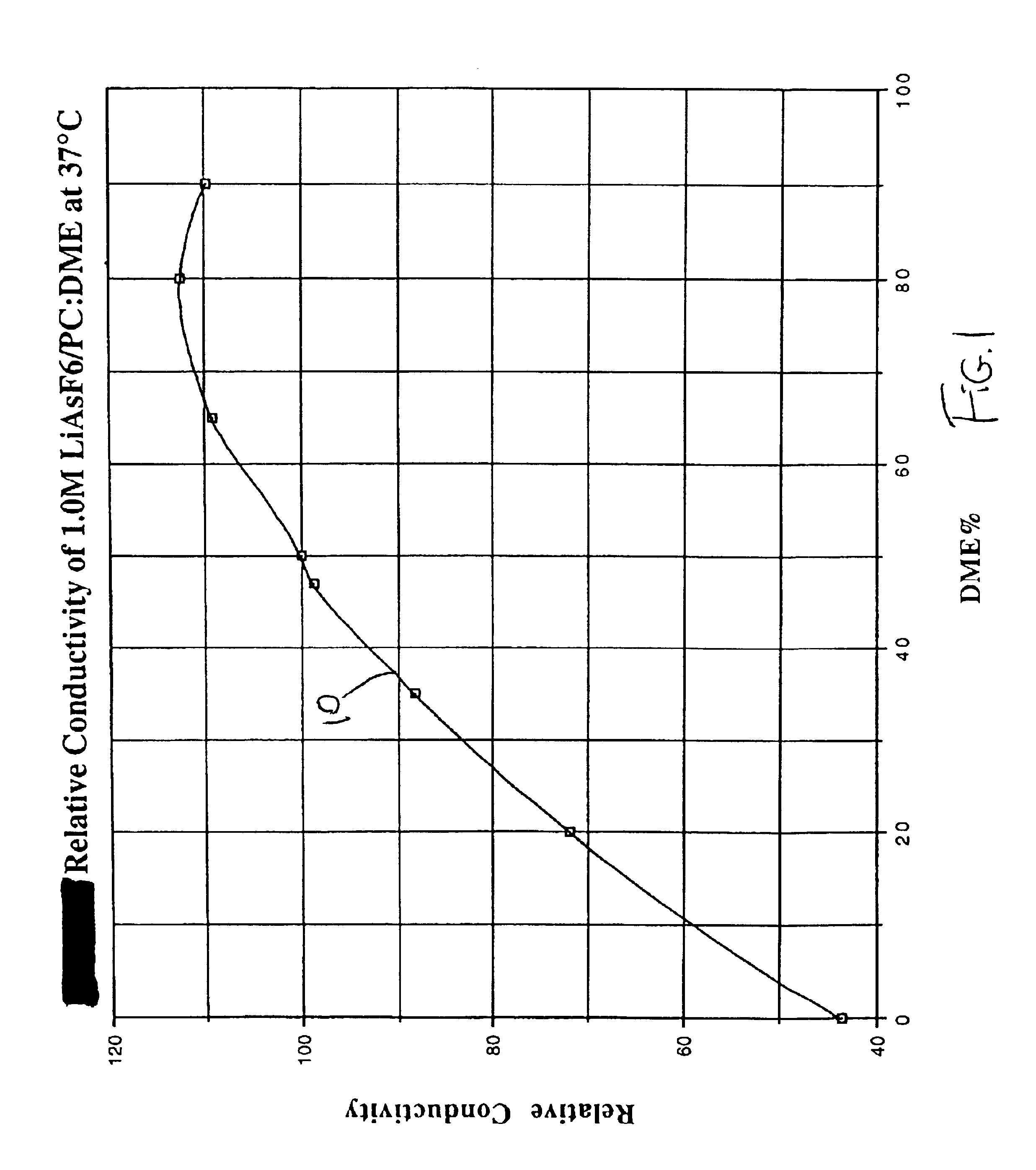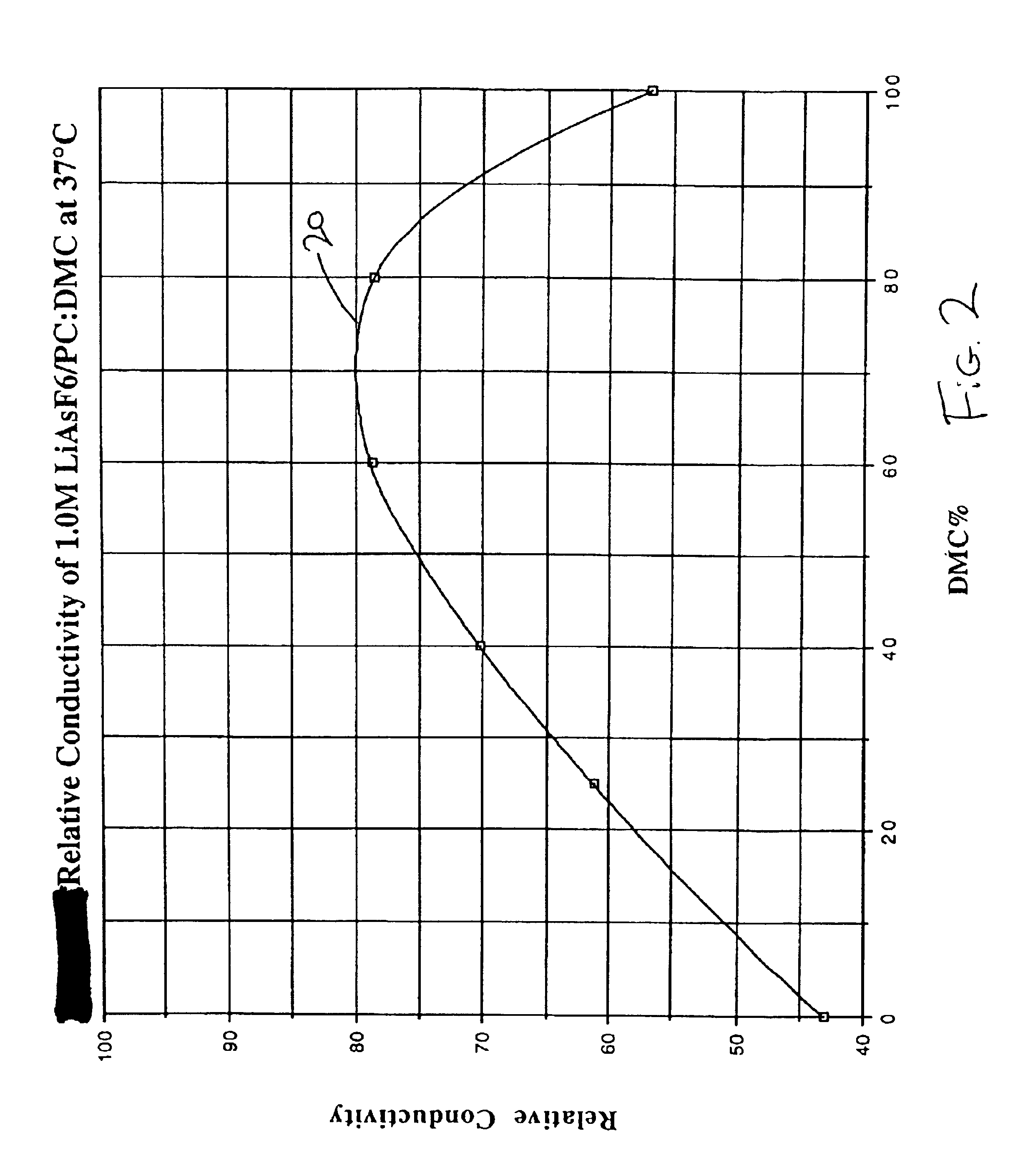Highly conductive and stable nonaqueous electrolyte for lithium electrochemical cells
a nonaqueous electrolyte, high-conductive technology, applied in the direction of non-aqueous electrolyte cells, cell components, therapy, etc., can solve the problems of increasing the obvious and severe phenomenon, reducing the discharge capacity, and not necessarily improving the cell performance or discharge capacity. , to achieve the effect of improving the chemical and electrochemical stability of the electrolyte, improving the electrolyte conductivity, and increasing the electrolyte conductivity
- Summary
- Abstract
- Description
- Claims
- Application Information
AI Technical Summary
Benefits of technology
Problems solved by technology
Method used
Image
Examples
example i
PC:DME System, Short Term Test Using a SVO Electrode
Lithium anode material was pressed on a nickel current collector screen and silver vanadium oxide (SVO) cathode material was pressed on a titanium current collector screen. A prismatic cell stack assembly configuration having two layers of microporous membrane polypropylene separator sandwiched between the anode and cathode was prepared. The electrode assembly was then hermetically sealed in a stainless steel casing in a case negative configuration and activated with an electrolyte. Some of the cells in this example were activated with electrolyte 1 (as reference cells) and others were activated with electrolytes 2 and 3.
A constant resistive load of 7.5 kΩ was applied to the cells during an initial pre-discharge period. The pre-discharge period is referred to as burn-in and depleted the cells of approximately 1% of their theoretical capacity. After burn-in and an acceptance pulse train discharge, applying a pulse train every thirty...
example ii
PC:DMC System, Short Term Test Using a SVO Electrode
Hermetically sealed Li / SVO cells were constructed as described in Example 1 and activated with electrolytes 1 and 4, respectively. After burn-in and an acceptance pulse train discharge, applying a pulse train at 37° C. every thirty minutes discharged these cells. The pulse trains consisted of four 10-second pulses (23.2 mA / cm2) with a 15-second rest after each pulse. The delivered capacities expressed as milliampere hours at several voltage limits are listed in Table 2.
TABLE 2Cell Discharge CapacitiesCapacity* (mAh) atLiAsF6Voltage CutoffElectrolyteConc.PC:DME:DMC2.0 V1.7 V1.5 V11.0M50:50:0015081679173541.2M30:00:70141116681735*Average of five cells.
Li / SVO cells containing electrolyte 4 delivered less capacity than the cells activated with electrolyte 1. The relative conductivity of the binary solvent (PC:DMC) electrolyte system is shown by curve 20 in FIG. 2. The results of Examples 1 and 2 demonstrate that the delivered capacity...
example iii
PC:DME System, Long Term Test Using a SVO Electrode
Hermetically sealed Li / SVO cells were constructed as described in Example 1 and activated with electrolytes 1 to 3, respectively. After burn-in and an acceptance pulse train discharge, applying a pulse train at 37° C. every 39 days using a 9.53 K-ohm load discharged these cells. The pulse trains consisted of four 10-second pulses (23.2 mA / cm2) with 15-second rest between each pulse. The results are summarized in Table 3 (PT stands for pulse train).
TABLE 3Long Term Test Pulse Train Data (V)*ElectrolyteP(pre1)V-DelayP(1 min)P(4 min)PT-113.2150.0002.6212.49123.2150.0002.6692.55033.2180.0002.6872.587PT-213.1310.0002.5702.44223.2150.0002.6112.49133.2180.0002.6162.515PT-312.8650.0002.4002.31122.8550.0002.4332.35432.8630.0002.4482.379PT-412.5980.1082.1142.21922.5890.1302.1182.25832.5950.1952.0872.288PT-512.5460.0771.9352.05023.5450.1291.8582.05133.5460.1501.8222.058PT-612.5260.1021.8101.92022.5240.1091.8251.95732.5270.1121.8251.974PT-712.4...
PUM
 Login to View More
Login to View More Abstract
Description
Claims
Application Information
 Login to View More
Login to View More - R&D
- Intellectual Property
- Life Sciences
- Materials
- Tech Scout
- Unparalleled Data Quality
- Higher Quality Content
- 60% Fewer Hallucinations
Browse by: Latest US Patents, China's latest patents, Technical Efficacy Thesaurus, Application Domain, Technology Topic, Popular Technical Reports.
© 2025 PatSnap. All rights reserved.Legal|Privacy policy|Modern Slavery Act Transparency Statement|Sitemap|About US| Contact US: help@patsnap.com



